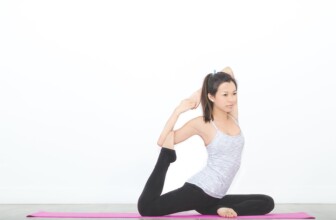Embracing Harmony: The Key to a Balanced Lifestyle
Introduction
In today's fast-paced world, where stress and distractions abound, the quest for a balanced lifestyle is becoming increasingly vital. Embracing harmony entails creating a well-rounded approach to life, encompassing physical, emotional, social, and spiritual well-being. This extensive article delves into what it means to live harmoniously, the benefits of achieving balance, and practical strategies to incorporate into daily rituals.
Section 1: Understanding Balance and Harmony
To understand the essence of balance and harmony, we must first define these concepts. Harmony refers to a state of being in agreement or concord, while balance signifies an even distribution of weight, enabling stability. Together, they depict a lifestyle where various aspects coexist fluidly rather than in conflict. Achieving this requires self-awareness, intentionality, and diligent practice.
Why Is Harmony Important?
Living in harmony leads to improved mental health, better relationships, and enhanced physical well-being. When we embrace a balanced lifestyle, we are more resilient against stress and have higher life satisfaction.
Section 2: Dimensions of a Balanced Lifestyle
A balanced lifestyle includes several dimensions. Understanding these can help in identifying areas that need attention. Key dimensions include:
- Physical Health: Regular exercise, nutritious diet, and adequate sleep.
- Mental Health: Stress management techniques and emotional well-being.
- Social Health: Building meaningful relationships and community engagement.
- Spiritual Health: Connection with oneself and the larger universe.
Section 3: The Role of Self-Awareness in Achieving Harmony
Self-awareness is the cornerstone of a balanced lifestyle. Recognizing your thoughts, emotions, and behaviors allows you to make informed decisions that align with your values and aspirations. Techniques such as meditation, journaling, and self-reflection can enhance self-awareness.
Case Study: The Transformation of John Doe
John, a corporate executive, found himself overwhelmed by work pressure and neglecting his health. By incorporating mindfulness techniques to enhance self-awareness, he rediscovered his passions and began exercising, leading to better physical and mental health.
Section 4: Practical Strategies for Achieving Balance
Embracing harmony involves practical steps that can be integrated into daily life. Here are some effective strategies:
1. Mindfulness and Meditation
Incorporate mindfulness practices like meditation to center yourself and develop emotional resilience. Begin with just five minutes a day, gradually increasing the duration.
2. Prioritize Self-Care
Schedule regular ‘me-time' to engage in hobbies or activities that bring joy. This can replenish your energy and improve overall mood.
3. Healthy Lifestyle Choices
Adopt a balanced diet and regular exercise routine. A well-nourished body is more equipped to handle stress and challenges.
4. Build Supportive Relationships
Foster friendships where mutual respect and understanding abound. Connecting with others mitigates feelings of isolation.
Section 5: The Impact of Technology on Lifestyle Balance
Technology has drastically changed how we live and interact. While it can be a tool for enhanced productivity and connection, it can also create distractions and enhance stress.
Strategies to Manage Technology
- Set boundaries on screen time to ensure it doesn't replace real-life interactions.
- Use apps that promote mindfulness and fitness.
- Consider digital detox periods to reconnect with nature and oneself.
Section 6: The Importance of Nutrition and Exercise
A balanced diet and regular physical activity are fundamental to achieving a harmonious lifestyle. Nutrition provides the body with the necessary energy, while exercise releases endorphins that boost mood and well-being.
Nutrition Tips
- Incorporate a variety of fruits and vegetables into meals.
- Avoid excessive processed foods and sugars.
- Stay hydrated by drinking plenty of water.
Exercise Guidelines
Aim for at least 150 minutes of moderate exercise each week. This can include activities like walking, cycling, or swimming.
Section 7: Q&A Section
Q1: How long does it take to achieve a balanced lifestyle?
A: Achieving a balanced lifestyle is a continuous journey. It can take weeks to months to establish new habits, depending on individual circumstances and commitment levels.
Q2: What are the signs of an unbalanced lifestyle?
A: Common signs include chronic fatigue, irritability, lack of motivation, and an increased feeling of stress or anxiety.
Q3: Can balance be achieved in all areas of life at once?
A: It is challenging to achieve balance in all dimensions simultaneously. It's important to focus on one area at a time while maintaining a general awareness of others.
Q4: Is it possible to use technology for a balanced lifestyle?
A: Yes! With mindful usage, technology can facilitate connections, provide health resources, and support personal development initiatives.
Section 8: Resources for Further Exploration
| Source | Description | Link |
|---|---|---|
| Mindful | Website focusing on mindfulness practices and techniques. | www.mindful.org |
| Nutrition.gov | Comprehensive resources on nutrition and healthy eating. | www.nutrition.gov |
| American Psychological Association | Research and articles on various aspects of mental health. | www.apa.org |
| Healthline | Articles and resources focused on health, fitness, and nutrition. | www.healthline.com |
Conclusion
Embracing harmony in life is not merely a goal but a continuous journey that requires attention and intention. By understanding the dimensions of balance, fostering self-awareness, and implementing practical strategies, individuals can experience a more satisfying and enriched life. The importance of nurturing physical, mental, social, and spiritual dimensions cannot be overstated, and all interconnect to form a holistic view of wellbeing. Moving forward, individuals might explore emerging trends like digital well-being apps, community mindfulness workshops, and more to further enhance their pursuit of a balanced lifestyle.
Disclaimer
The information provided in this article is intended for educational purposes only and does not substitute for professional medical advice, diagnosis, or treatment. Always seek the advice of your physician or other qualified health provider with any questions you may have regarding a medical condition or lifestyle change.










